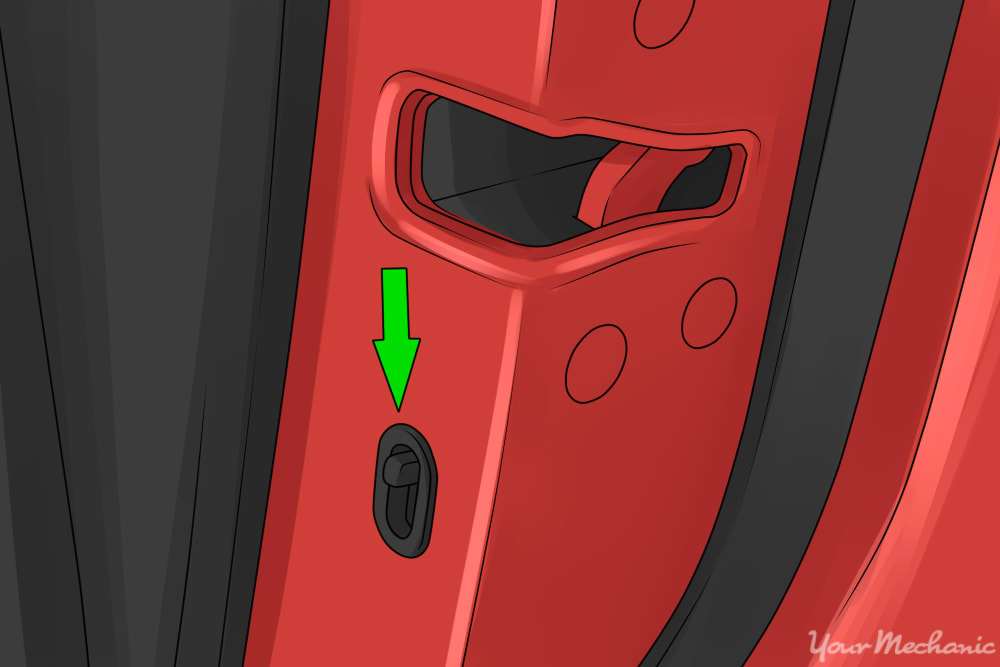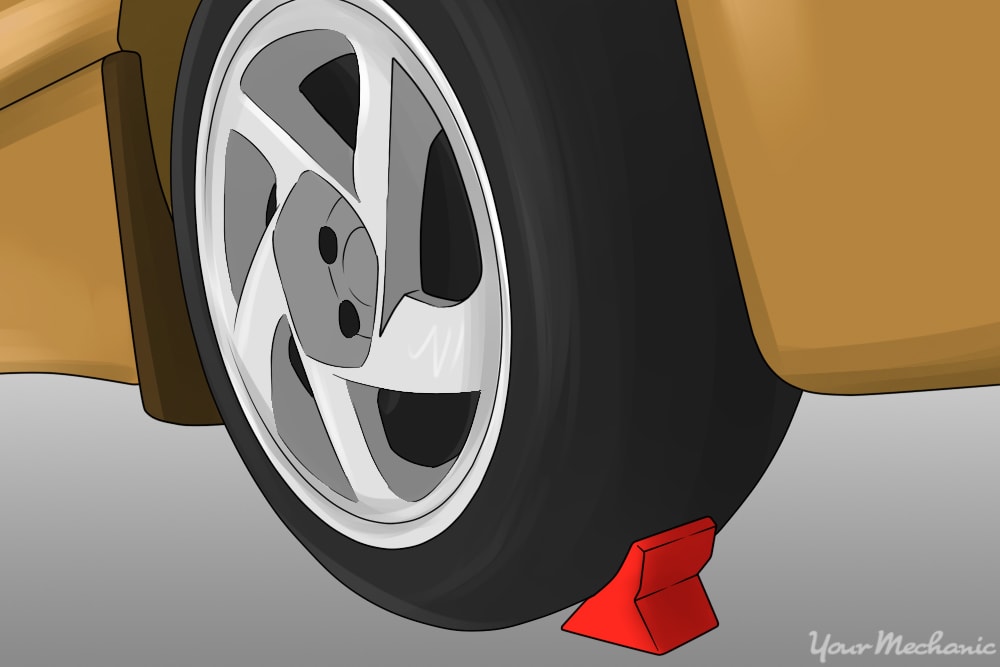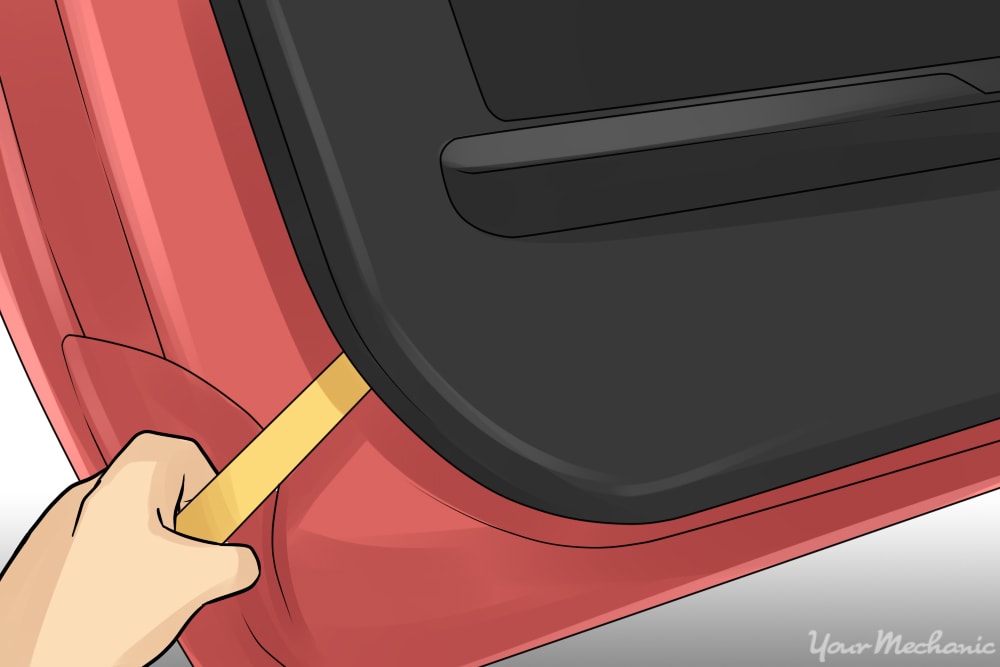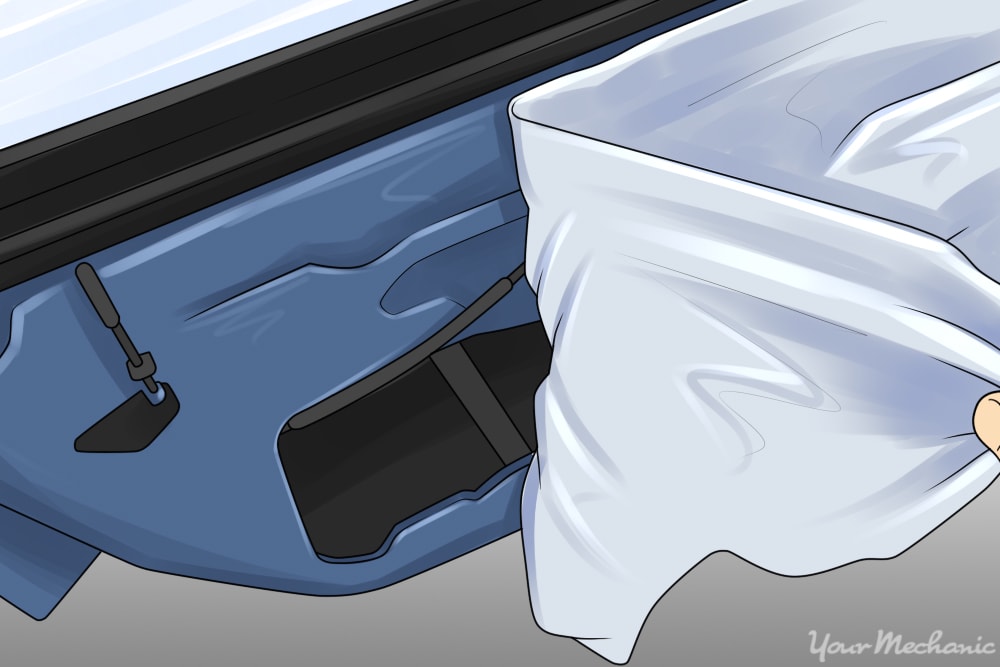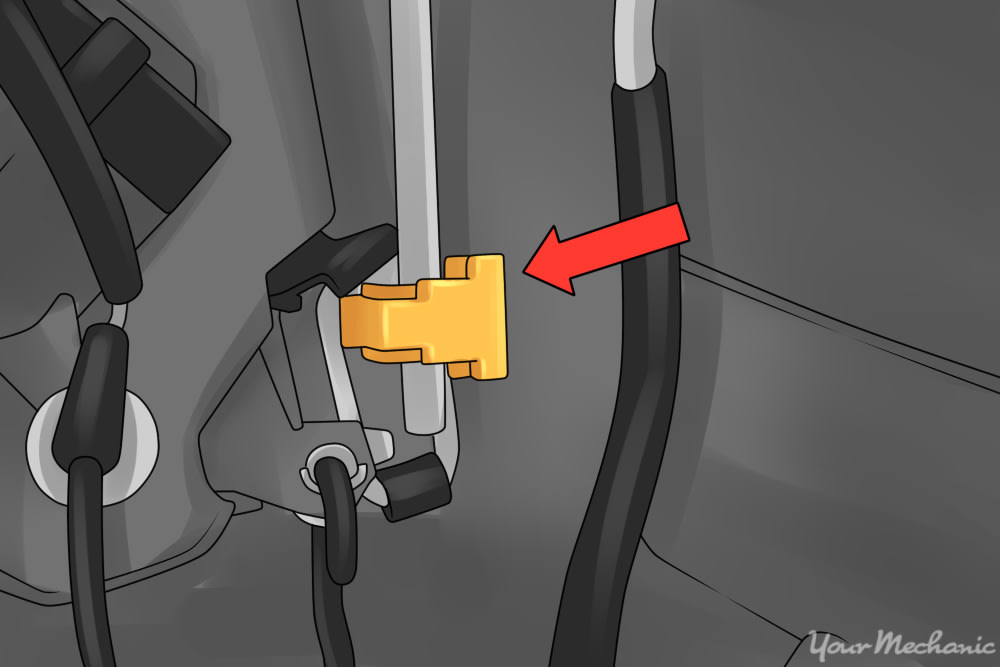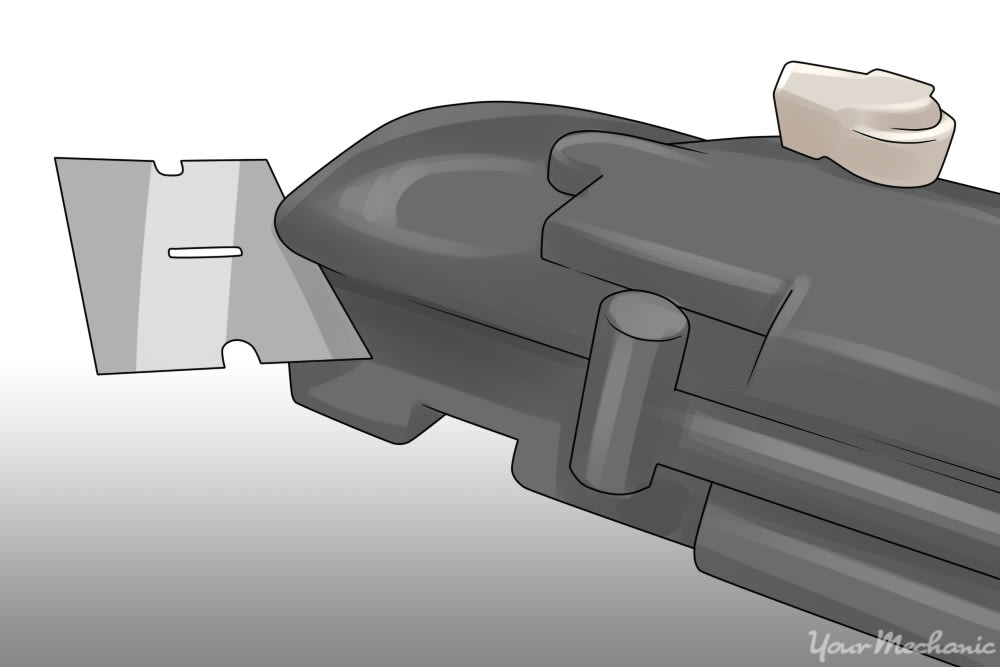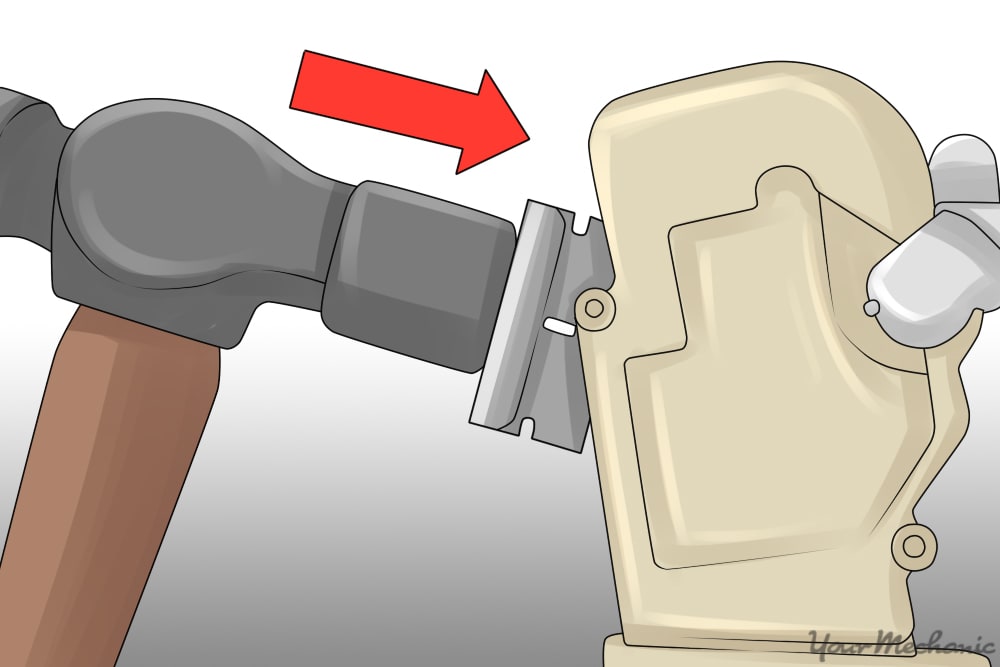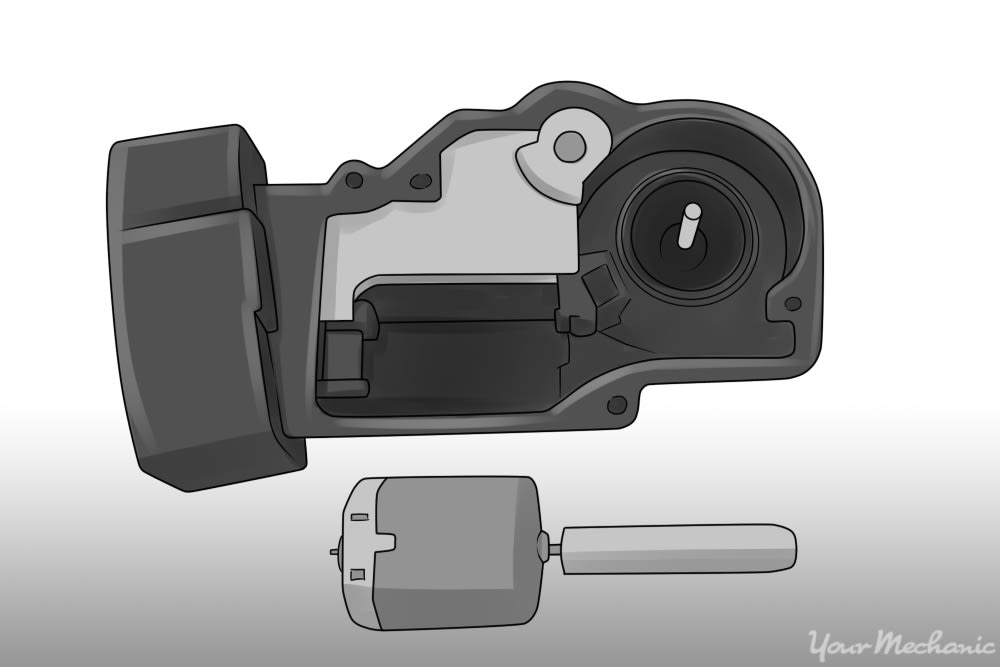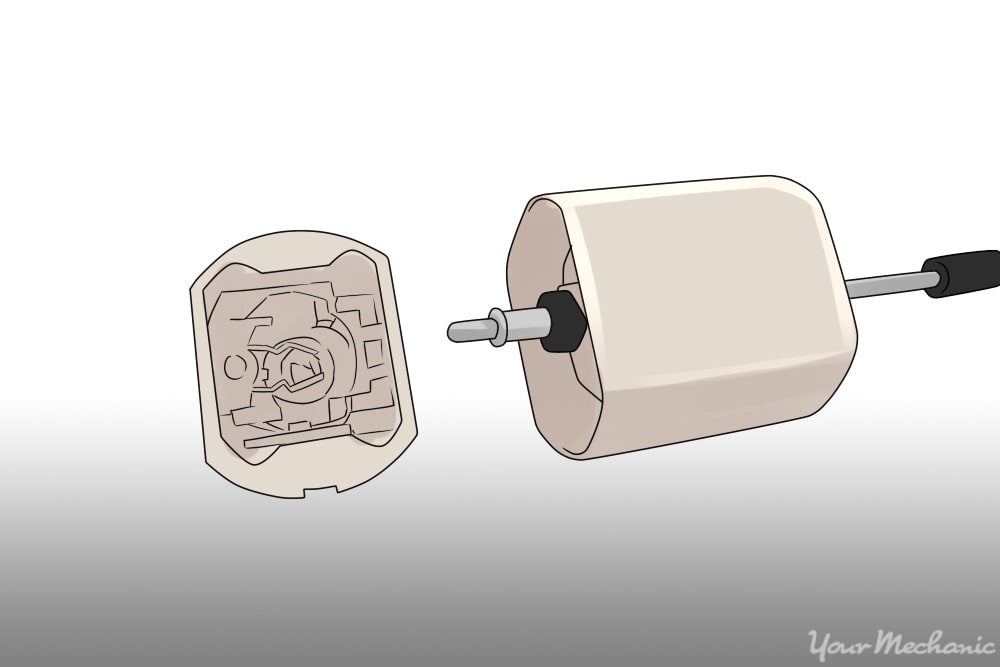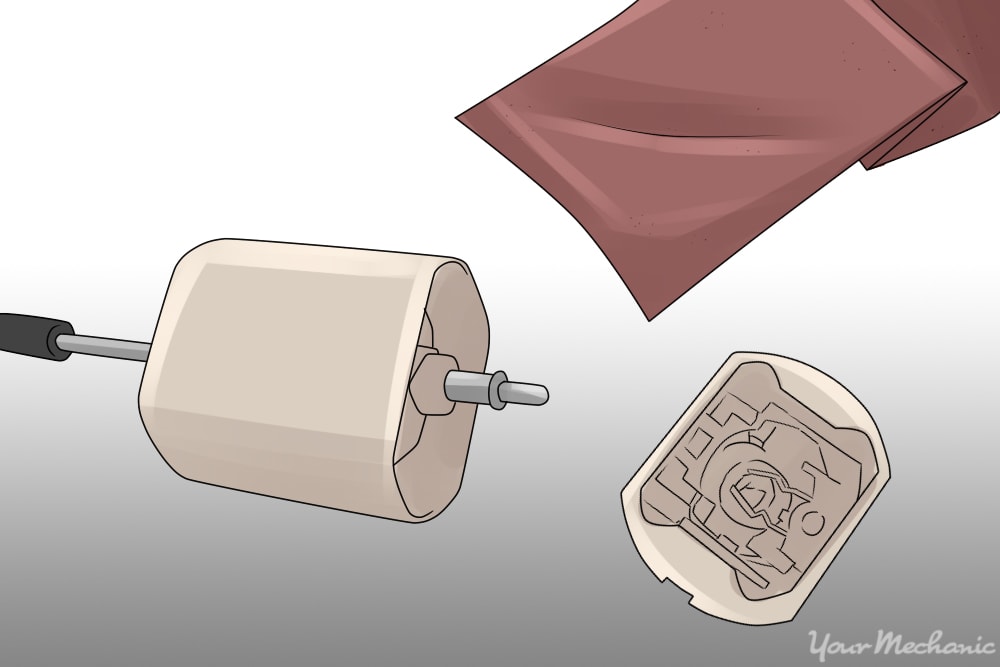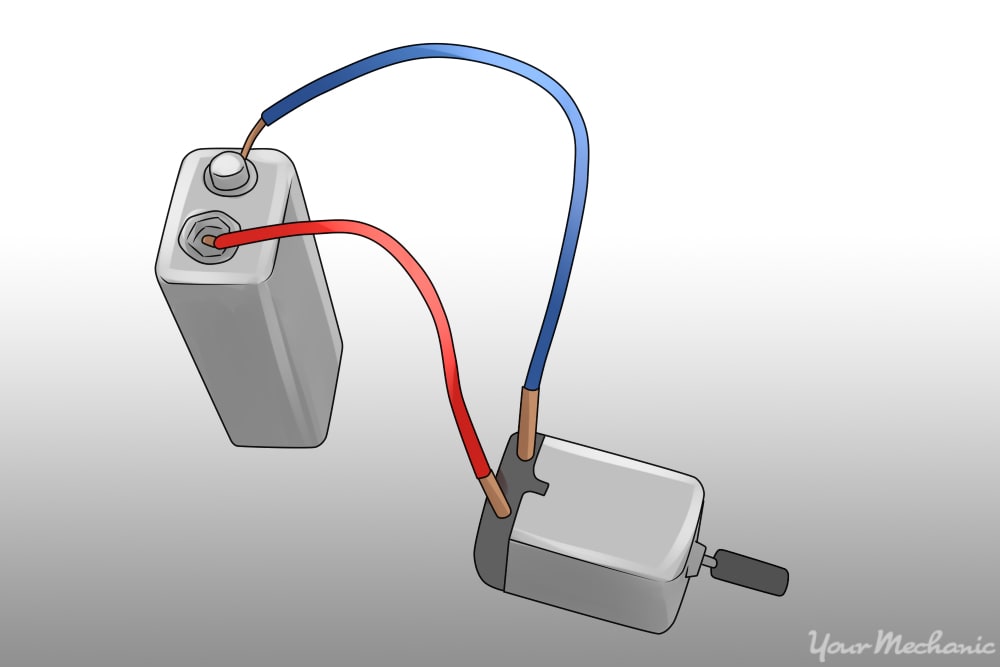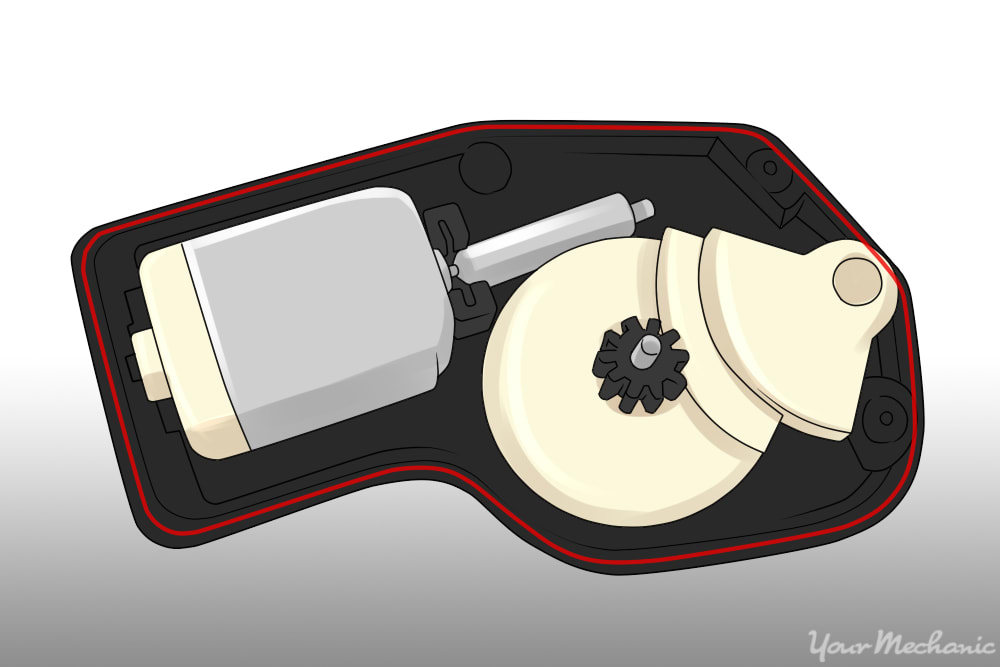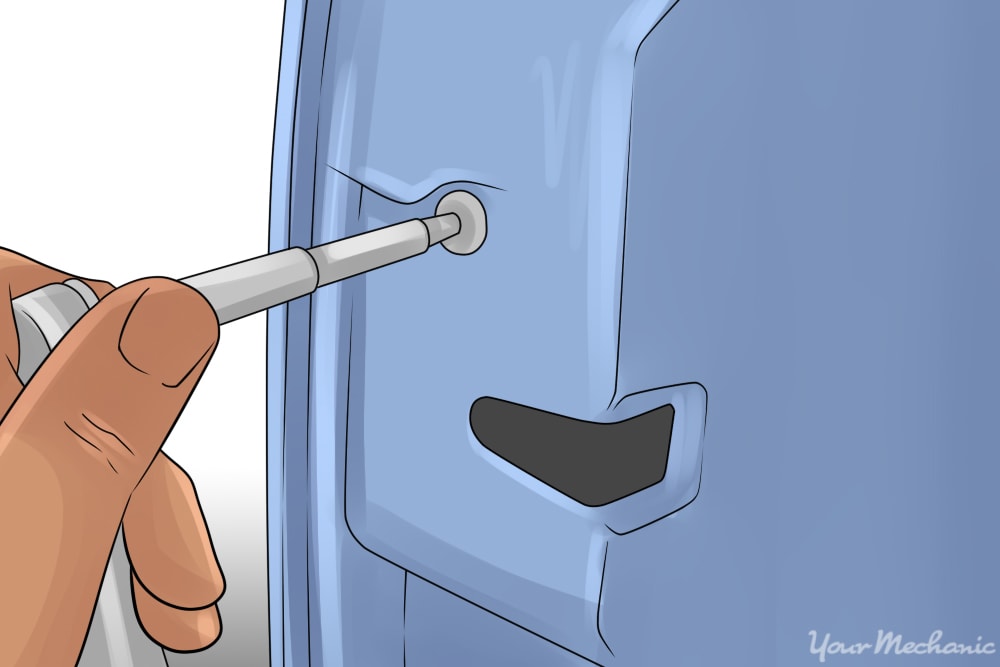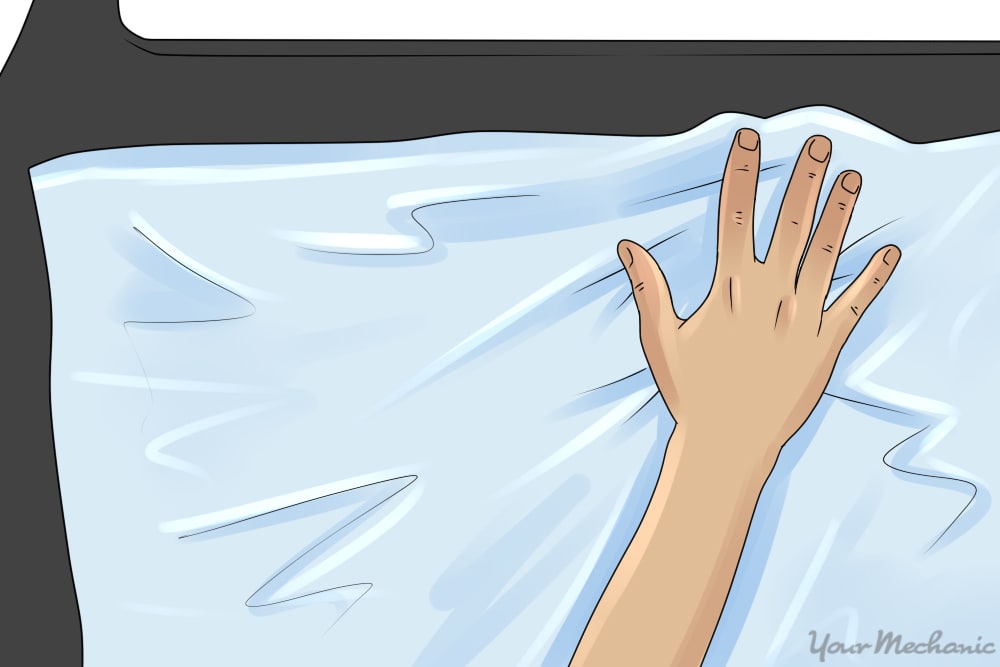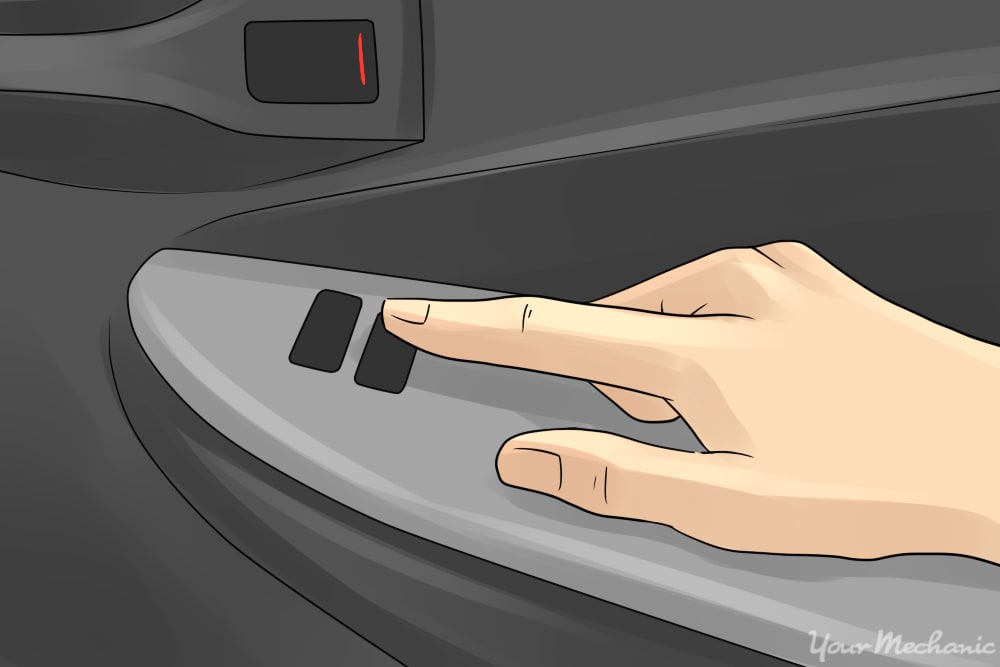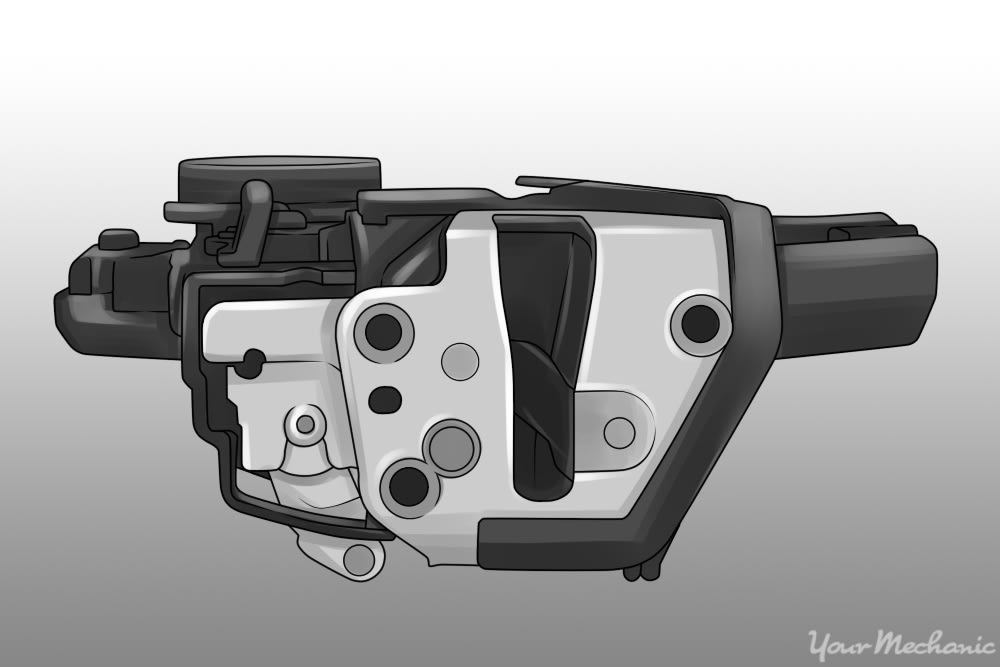

Car door lock actuators are designed to lock and unlock a door without the effort of pulling on a cable and rod.
In some cars, the door lock actuator is positioned below the latch. A rod connects the actuator to the latch, and another rod connects the latch to the knob that sticks up out of the top of the door.
When the actuator moves the latch up, it connects the outside door handle to the opening mechanism. When the latch is down, the outside door handle is disconnected from the mechanism so that it cannot be opened. This makes the outside handle move without moving the latch, preventing the door from opening.
The power door lock actuator is a simple mechanical device. This system is quite small in size. A small electric motor turns a series of spur gears that serve as a gear reduction. The last gear drives a rack and pinion gear set that is connected to the actuator rod. The rack converts the rotational motion of the motor into the linear motion needed to move the lock.
There are a number of ways that you can unlock car doors that have door lock actuators, including:
- Using a key
- Pressing the unlock button inside the car
- Using the combination lock on the outside of the door
- Pulling up the knob on the inside of the door
- Using a keyless entry remote control
- Signaling from a control center
There are two ways to determine if the actuator has failed:
- By operating a remote device or keypad to unlock the door
- By pressing on the unlock button on the door panel cluster
If the door remains locked in either or both of these cases, the problem is the actuator.
There are several reasons why a door lock actuator may need to be replaced. Sometimes a door lock actuator stops working completely. In some cars, a door lock actuator becomes noisy and produces a squeaking or buzzing noise when the power door locks are locked or unlocked. If the electric motor or the mechanism inside the door lock actuator wears out, the door lock may lock or unlock slowly or work sometimes but not all the time. In some cars, a failed door lock actuator may lock but won’t unlock, or the other way around. In most cases, the problem with a door lock actuator is limited to only one door.
In some vehicles, the cable that connects the door lock actuator to the inner door handle may be built into the actuator assembly. If this cable breaks and it’s not sold separately, the whole door lock actuator may need to be replaced.
Part 1 of 6: Verifying the condition of the door lock actuator
Step 1: Inspect the affected door and lock. Locate the door with the damaged or broken door lock actuator. Visually look at the door lock for any exterior damage. Gently lift up on the door handle to see if there is any binding of the mechanism within the door.
This checks to see if the actuator has frozen in a position that makes the handle seem as if it is jammed.
Step 2: Open the affected door. Get into the vehicle from another door if the door you are working on will not let you enter the vehicle. Open the door with the broken or damaged actuator from the inside of the vehicle.
Step 3: Rule out the door lock. Try operating the door lock switch to rule out the idea that the door lock is not working. Then try to open the door from the inside of the vehicle.
Whether the door is locked or not, the door should open from the inside when operating the inside door handle.
- Note: If you are working on the rear doors of a four-door sedan, keep the child safety locks in mind. If the child safety lock is on, the door will not open when operating the inside handle.
Part 2 of 6: Preparing to replace the door lock actuator
Having all of the necessary tools and materials and preparing the vehicle prior to starting the work will allow you to get the job done more efficiently.
Materials Needed
- 1000 grit sandpaper
- Boxed end wrenches
- Cross tip, or phillips head, screwdriver
- Electrical cleaner
- Flathead screwdriver
- Mineral spirits cleaner
- Needle nose plyers
- New door lock actuator
- Nine-volt battery
- Nine-volt battery saver
- Ratchet with metric and standard sockets
- Razor blade
- Removal tool or pry tool
- Small hammer
- Super glue
- Test leads
- Torques bit set
- Wheel chocks
- White lithium
Step 1: Position the vehicle. Park your vehicle on a flat, hard surface.
Step 2: Secure the vehicle. Place wheel chocks around the tires. Engage the parking brake to the lock the tires and keep them from moving.
Step 3: Install a nine-volt battery saver. Plug the battery saver into your cigarette lighter. This will keep your computer live and keep your vehicle settings current. If you do not have a nine-volt battery saver, though, that’s okay.
Step 4: Disconnect the battery. Open the vehicle’s hood and locate the battery. Take the ground cable off of the battery’s negative post, disabling the power to the door lock actuator.
- Note: If you have a hybrid vehicle, use the owner’s manual for instructions on disconnecting the small battery only.
Part 3 of 6: Removing the door lock actuator
Step 1: Remove the door panel. Start with removing the door panel from the affected door. Gently pry the panel away from the door all the way around. A flat screwdriver or removal tool (preferred) helps here, but be gentle so you don’t damage the painted door around the panel.
Once all the clips are loose, grab the panel top and bottom and bend it slightly away from the door. Lift the whole panel straight up to clear it of the catch behind the door handle.
- Note: If your vehicle has electronic door locks, you will need to remove the door lock cluster panel from the door panel. Before removing the door panel, remove the screws attaching the cluster to the panel. If the cluster cannot be detached, you may be able to disconnect the harness connectors under the door panel as you pull it off. If the vehicle has custom speakers that are externally mounted on the door panel, these would need to be removed prior to removing the door panel as well.
Step 2: Remove the plastic sheeting behind the panel. Peel back the plastic cover that sits behind the door panel. Do it gently and you’ll be able to reseal the plastic later.
- Tip: This plastic is essential to forming a water barrier inside the door panel as some water always gets into the inside of the door during rainy days or a car wash. While you are at it, check that the two drain holes in the bottom of the door are clear and there is no buildup of debris there.
Step 3: Locate and remove the clips and cables. Look inside the door near the door handle and you’ll see two metal cables with yellow clips on them.
Pry off the clips. The top one pries up and out away from the door handle, and the bottom one pries up and toward yourself. Then pull the cables out of the sockets.
Step 4: Remove the door lock actuator bolts and the lock screws. Find the two 10mm bolts above and below the actuator and remove them. Then remove the three screws from the door lock.
Step 5: Disconnect the door lock actuator. Allow the actuator to drop down, then disconnect the black electrical connector.
Step 6: Remove the lock and actuator assembly and take off the plastic cover. Pull out the lock and actuator assembly along with its cables.
Separate the white plastic cover that is held on by two screws, then separate the plastic door lock actuator that’s held in place by two screws.
- Tip: Keep in mind how the white plastic cover is mounted onto the lock and actuator assembly so that you will be able to properly reassemble it later.
Part 4 of 6: Repairing the door lock actuator
At this point, you will begin working on the door lock actuator. The idea here is to pry the actuator open without damaging it. Since it is not a “serviceable part,” the actuator housing is molded together at the factory. This is where you will need your razor blade, a small hammer, and some patience.
Step 1: Use a razor blade to open up the actuator. Start on the corner by slicing your razor through the seam.
- Warning: Be very careful not to injure yourself with the sharp razor blade.
Position the actuator on a solid surface and tap the blade with the hammer until it gets in pretty deep. Keep going around the actuator to get as much of it separated by the razor as you can.
Carefully pry through the bottom portion next to the pin housing.
Step 2: Remove the electric motor from the actuator. Pry up on the gear and pull it out. Then pry the motor up from its plastic portion and pull it out. The motor is not soldered in, so there are no wires to worry about.
Remove the worm gear and its bearing from the plastic housing.
- Note: Take notes on how the bearing is installed into the housing. The bearing must go back in the same way.
Step 3: Take apart the motor. Using a sharp pry tool, pry out the metal tabs that hold the plastic backing in place. Then very carefully pull the plastic portion out of the metal housing, taking caution not to damage the brushes.
Step 4: Clean and reassemble the motor. Use electrical parts cleaner to spray off old grease that has built up on the brushes. Use 1000 grit sandpaper to clean up the copper drum on the coil shaft.
Put a small amount of white lithium on the copper parts and reassemble the motor. This cleans up the electrical contacts for a proper connection.
Step 5: Test the motor. Place your test leads on the motor contact points and connect the leads to a nine-volt battery to check the motor operation.
- Warning: Do not connect the motor to the battery for longer than a few seconds as these motors are not designed for that.
Step 6: Reinstall the motor and gears. Place the parts in reverse order from that in which you took them out.
Apply super glue to the cover and join the cover and housing back together. Hold them together until the glue bonds.
Part 5 of 6: Reinstalling the door lock actuator
Step 1: Reinstall the plastic cover and replace the assembly. Attach the plastic door lock actuator back onto the assembly with two screws. Install the white plastic cover back onto the lock and actuator assembly by securing it with the two other screws you removed previously.
Place the lock and actuator assembly, with the cables attached, back into the door.
Step 2: Clean and reconnect the actuator. Spray electrical cleaner onto the black electrical connector. After it dries, reconnect the black electrical connector to the door lock actuator.
Step 3: Replace the door lock actuator bolts and screws. Reinstall the three screws into the door lock to secure it in the door. Then reinstall the two 10mm bolts above and below the location of the door lock actuator to secure the actuator.
Step 4: Reattach the clips and cables. Reconnect the metal cables near the door handle by connecting the yellow clips back onto the sockets.
Step 5: Reinstall the clear plastic sheeting. Put the plastic cover that goes behind the door panel back into place and reseal it.
Step 6: Replace the door panel. Put the door panel back onto the door and reattach all of the tabs by lightly snapping them into place.
- Note: If your vehicle has electronic door locks, you will need to reinstall the door lock cluster panel back into the door panel. After replacing the door panel, reinstall the cluster into the panel with screws. Make sure the cluster is connected to the wiring harness. You may have to attach the connectors under the door panel before you fully reinstall the panel into the door. If the vehicle has custom speakers that are externally mounted on the door panel, these would need to be reinstalled back onto it after replacing the panel as well.
Part 6 of 6: Reconnecting the battery and testing the door lock actuator
Step 1: Replace the battery cable and remove the battery saver. Open the vehicle’s hood and reconnect the ground cable back onto the battery’s negative post. Tighten the battery clamp up tight to ensure that the connection is good.
Then unplug the nine-volt battery saver from the cigarette lighter.
- Note: If you did not have a nine-volt battery saver, you will have to reset all of the settings in your vehicle, like your radio, electric seats, electric mirrors, and so on.
Step 2: Test the repaired door lock actuator. Pull on the outside door handle and ensure that the door opens from the latched position. Shut the door and get inside the vehicle through another door. Pull on the inside door handle and ensure that the door opens from the latched position. This ensures that the door will open with the door unlocked.
Sitting in the car with the doors shut, press on the locking switch of the affected door lock actuator. Then operate the inside door handle and open the door. If the door lock actuator is operating correctly, opening the interior door handle will override the door lock actuator.
- Note: If you are working on the rear doors of a four-door sedan, make sure that you turn off the child safety lock to test the repaired door lock actuator correctly.
While standing outside of the vehicle, shut the door and lock it with your electronic device only. Operate the outside door handle and to ensure that the door is locked. Unlock the door with the electronic device and operate the outside door handle again. This time, the door should open.
If your car door lock still does not function properly after repairing the door lock actuator, then there may be further diagnosis of the door lock and actuator assembly or a possible electronic component failure. You can always Ask a Mechanic to get quick, detailed advice from one of the certified technicians here at YourMechanic.
You may need to fully replace the actuator. If you would rather a professional perform this job, you can have one of our qualified mechanics come and replace your door lock actuator for you.



